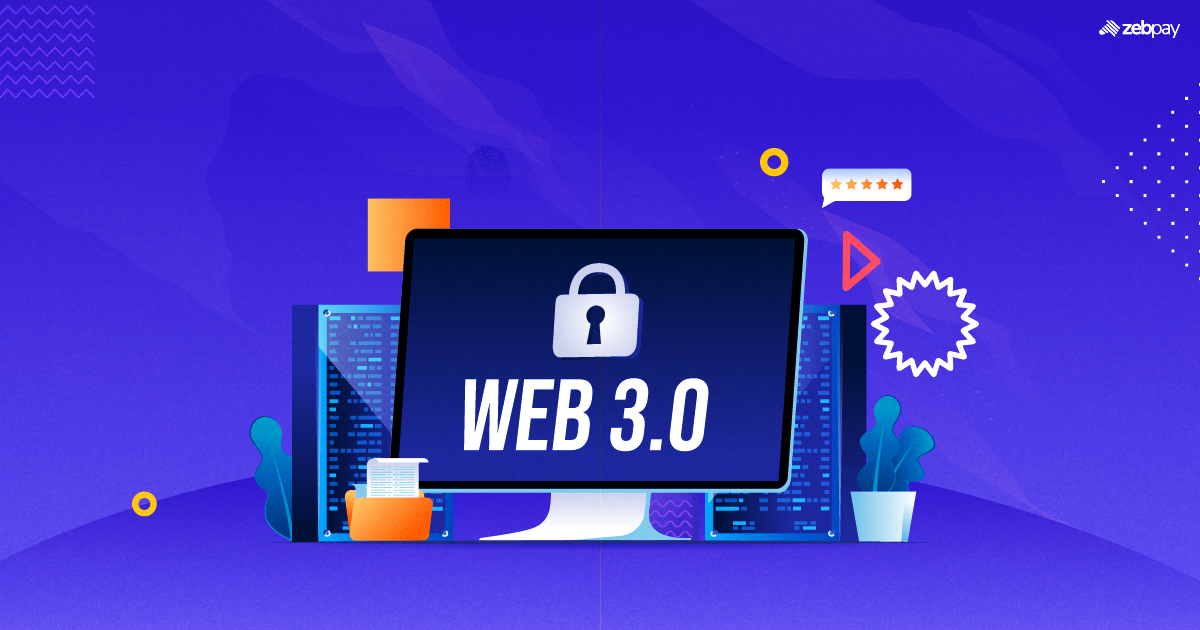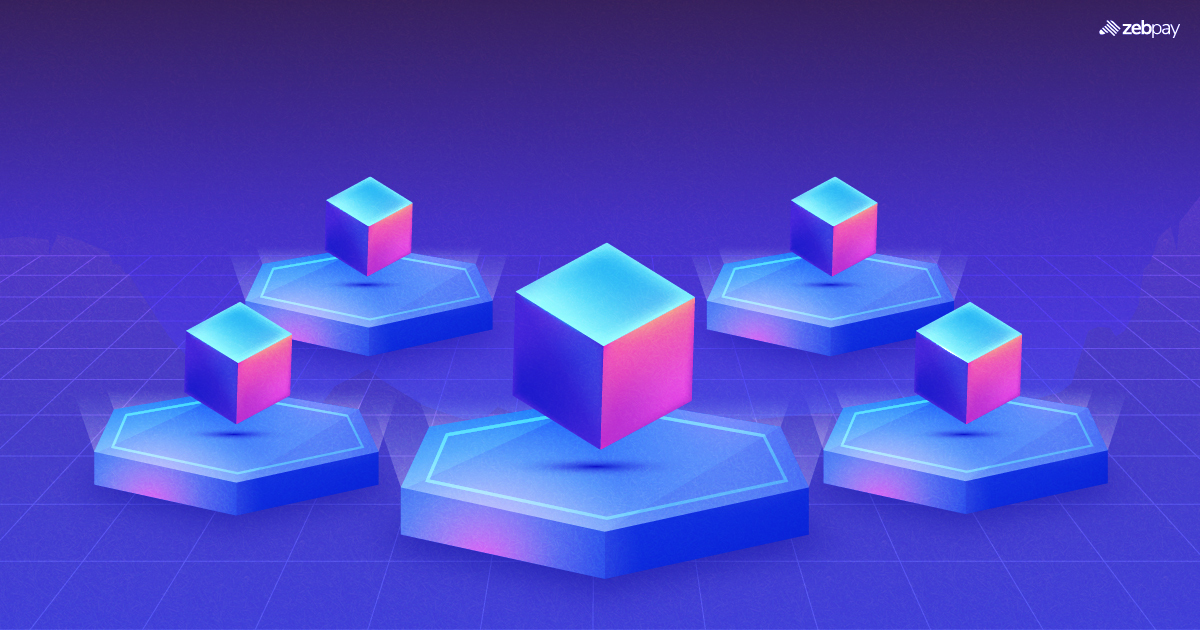Web 3.0 will represent the next iteration of the web and could potentially be as disruptive as Web 2.0. Web3 is being built on core concepts like openness, enhanced user experience, and decentralization. Web3 is the successor and an advanced iteration of Web 2.0, a successor to Web 1.0 of the 1990s.
Cybersecurity has become essential for individuals and companies to protect vital information. The evolving digital age has led to an explosion of data, such as health, financial, and professional data. Web3 features such as data minimization, digital wallets, and ID portability have mitigated some of the privacy issues of Web 2.0. It offers users greater control over their sensitive personal data.
Understanding Web 3.0
Web3 represents a new version of the internet that interlinks data in a decentralized way for greater personalization in the user experience. Some of its key features include Artificial intelligence, the semantic web, 3D graphics, and decentralization. Web3 applications are more resilient to cyberattacks than conventional web applications as their data is stored on a distributed ledger.
Web3’s decentralized systems offer a solution to Web 2.0’s centralized storage architecture.It enables the democratization of online data due to data storage on decentralized networks for improved data ownership control and ownership. To understand how Web 3.0 is enabling higher security let us understand few key aspects mentioned below.
Read more: What is Web 3.0
Decentralized Identity and Authentication
The most secure and effective form of a Web3 digital identity is SSI or self-sovereign identity. SSI is a way of establishing a digital identity that empowers users with ownership of their data. It eliminates the need to store sensitive data on a central database, giving users greater control over their data and safeguarding their privacy. It is a user-controlled approach to exchanging authentic digitally signed information in a decentralized way.
A significant change in Web3 is that it shifts away from having a central point to store and control our data. This change is due to technological advancements like blockchain technology. It provides users with greater autonomy over their data. It also makes the new iteration of the internet more resilient to censorship, as no central entity will control how information is shared with users.
Secure Communication and Data Encryption

Web3 communication will be between decentralized accounts without a central entity and operate on a peer-to-peer network. It is used in decentralized applications and allows users to communicate directly with each other without using intermediaries. It uses advanced security technologies like digital signatures and end-to-end encryption that are not available in traditional messaging applications. These features help to ensure that communication data is protected from unauthorized or illegal access. It is also censorship-proof and ensures complete access to only the person who owns the data. Web3 messages are stored in a decentralized way rather than in a single central database. This feature provides greater resilience against data loss.
Immutable Ledgers and Blockchain Technology
Distributed ledgers, or blockchains, eliminate the risks of data manipulation once it is stored through cryptographic hashing. Blockchain is designed to store data in an immutable manner without any alterations.
Smart contracts automate the execution of contractual terms, such as crypto-asset transactions. They are immutable; they cannot be modified once deployed on a blockchain network. All Web3 assets, such as crypto tokens, DeFi, and NFTs, depend on Smart contract technology.
Decentralized Security Infrastructure
DDoS cybersecurity refers to protecting a network from a DDoS, or distributed denial-of-service, attack. Users can mitigate this security threat using cloud-based protection services or specially designed network equipment. Criminals find it hard to take down decentralized networks with a DDoS attack.
Many decentralized DDoS solutions are available today, such as DDoS-Guard, which uses a network of decentralized servers to mitigate cyberattacks. More cyberattack protection solutions will emerge in the market as Web3 continues to evolve like intrusion detection systems and decentralized firewalls.
Read more: Crypto DDoS Attacks
Cyber Threat Detection and Response
As Web3 becomes increasingly adopted in the mainstream, it will be a target of various cyberattacks such as ransomware, phishing, and DDoS attacks. Global organizations must implement advanced detection capabilities and threat intelligence to protect against these ever-evolving digital threats.
Threat intelligence is a concept of collecting and analyzing data about potential cyberattacks. It will be decentralized in Web3, with multiple groups or individuals contributing to identifying security threats. It will require new methods for sharing and collaborating on security intelligence by leveraging new-age technologies such as machine learning (ML) and artificial intelligence (AI). It helps in identifying and responding to cyberattacks in real-time. In Web3, threat detection will be distributed across the network, with multiple parties dealing with potential threats. It will also require implementing the latest technologies, such as AI and ML, to develop new intrusion and threat detection systems.
Privacy-Preserving Technologies
Cryptographic tools like zero-knowledge proofs have the potential to transform the blockchain space by offering greater privacy, enhanced security, and accessibility. Zero-knowledge proofs validate transactions while preserving user privacy and improving efficiency in blockchain operations. New Oracle protocols leverage zero-knowledge proofs to verify real-world data without revealing sensitive data. In DeFi, they empower users to protect their privacy while performing secure and transparent transactions.
Read more: Web3 and Data Privacy
MPC, or multi-party computation, is a process that involves taking inputs from independent participants in a decentralized network and computing results without revealing sensitive information. No central, trusted authority or entity is needed to collect data and declare results. Some real-world use cases of MPC include the computation of election results without having a central counting authority. Another application is computing the winner of an online bidding process without revealing individual bids.
Bug Bounty Programs and Security Audits
Bug bounty programs employ network security providers to identify bugs and other weaknesses in an organization in return for monetary rewards. They can report on bugs such as hardware flaws, security exploits, process issues, and other vulnerabilities. These programs incentivize ethical hackers to discover bugs and other weaknesses in Web3 applications. These security initiatives provide rewards for contributions to the security of Web3 applications.
Security audits are systematic evaluations of the security protocols of Web3 applications. These audits will find how security protocols comply with criteria to validate their strength to protect Web3 protocols. It should be conducted regularly to secure Web3 assets and data. They can also help ensure Web3 businesses are compliant with various regulations. Penetration tests are more rigorous security tests than security audits, as they try to breach Web3 protocols just like hackers. Security experts will replicate the same methods employed by criminals to find out if your system can withstand a similar cyberattack.
Regulatory Compliance and Standards
The decentralized nature of Web3 causes a conflict with data privacy regulations as it assumes data is collected and owned by an entity. This assumption is wrong for Web3 enterprises and creates several challenges in complying with various data and privacy regulations.
Platforms compliant with legal frameworks ensure that they maintain data privacy and protect their users. For example, GDPR, or general data protection regulation, ensures that companies have measures to protect user data and hand over control over their sensitive data. The Smart contract applications on Web3 protocols should also be legally enforceable and must not violate data privacy laws. Compliance is vital to building a sustainable Web3 ecosystem that grows and thrives in the future.
Conclusion: Securing the Web 3.0 Landscape
Developers should adopt a multi-faceted approach to Web3 security and build a resilient system to ensure a trustworthy future. Regular security audits are vital to detecting threats and ensuring timely solutions. AI and ML technology can be used to identify top-priority systems that need protection, making it easier to address vulnerabilities and minimize potential damage from cyberattacks. Regular monitoring and security audits can ensure Web3 protocols are secure and legally compliant to support sustainable growth.
Read more: Web 3.0 vs Web 2.0
To stay up to date with the latest crypto news, visit ZebPay blogs. Click on the button below to trade on ZebPay.
FAQs
How does Web 3.0 enhance cybersecurity compared to previous versions of the web?
Web3 features such as data minimization, digital wallets, and ID portability have mitigated some of the privacy issues of Web 2.0.
What are the key technologies driving cybersecurity in Web 3.0?
Web3 uses decentralized identities, data encryption, threat deduction, immutable ledgers, and regular security audits to improve cybersecurity.
How can decentralized identity and authentication improve cybersecurity?
Decentralized identity eliminates the need to store sensitive data on a central database, giving users greater control over their data and safeguarding their privacy.
What are the advantages of utilizing blockchain technology for cybersecurity in Web 3.0?
Distributed ledgers, or blockchains, eliminate the risks of data manipulation once it is stored through cryptographic hashing. Blockchain is designed to store data in an immutable manner without any alterations.







